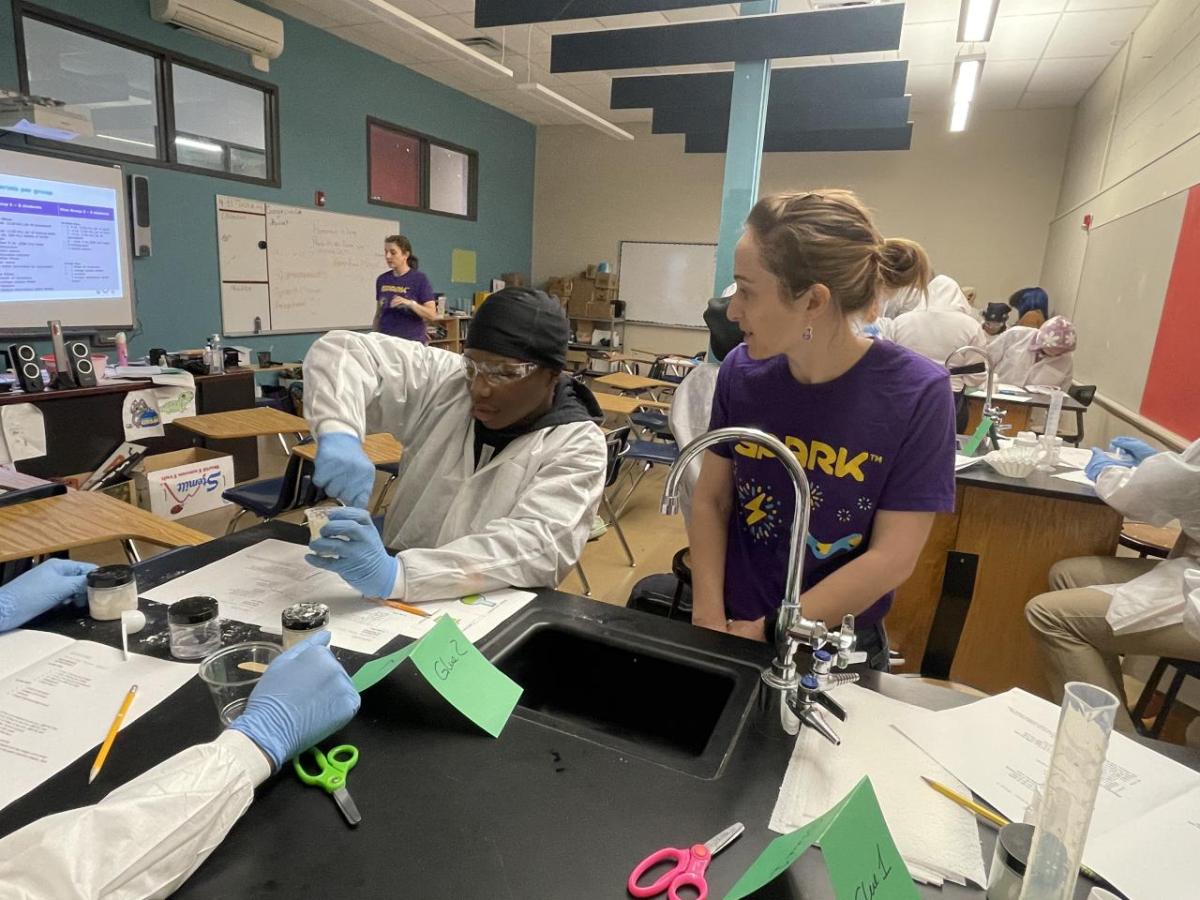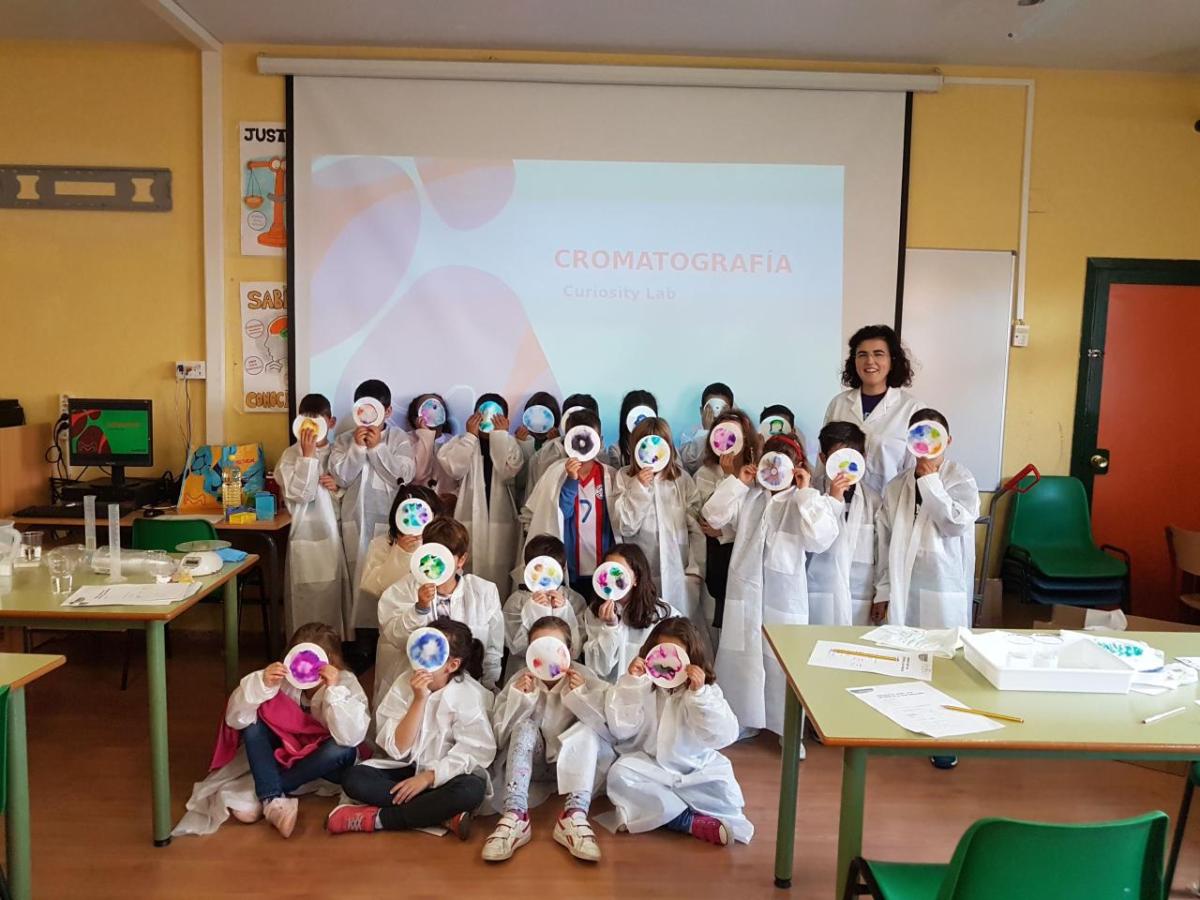MilliporeSigma Partners With ISP to Spark Passion for STEM Learning Worldwide
Jacky Bransome is neither a scientist nor a teacher. But she happens to know that fireflies aren’t the best way to explain chemiluminescence to students living in her part of the world. Turns out that fireflies aren’t a thing in Gillingham, UK.
It’s one of many fun facts she has picked up over the years through SPARK™, a volunteer program developed by her employer, the Life Science business of Merck KGaA, Darmstadt, Germany, which operates as MilliporeSigma in the U.S. and Canada. The company launched the program in 2016 to provide its 30,000+ employees an opportunity to volunteer and share their expertise with students around the world with an engaging invitation to experience hands-on science and consider careers in STEM.
Bransome is all in. She works in commercial services and also serves as a SPARK™ Lead, charged with supporting her colleagues participation at the company’s Gillingham facility to volunteer for its Curiosity Labs™ and Curiosity Cube programs. Both experiences are aimed at providing students with access to hands-on science learning, particularly those in under-represented populations.
“My favorite lesson is the one on chemiluminescence,” she says. “It has that wow factor. It’s not just watching adults do stuff. The best science teacher I had was one who had exciting lessons that ignited my interest.”
Getting to say yes on volunteering is a lot easier once potential volunteers discover just how much support they’ll have. Scientists and non-scientists across the globe receive thorough training, opportunities to observe sessions led by more experienced peer volunteers and turnkey - kits that take the guesswork out of the process.
Each Curiosity Labs™ lesson is created, tested and retooled by MilliporeSigma’s Curiosity Labs™ Coordinator Maite Nogales and Institute for School Partnership’s Instructional Specialist Lauren Ashman.
They’ve thought of everything.
Testing, testing, testing
Should the water be hot or room temperature? Are the instructions clear? What’s the best tool for applying a sticky substance to paper? When is the right time to ask a question?
These were just a few of the questions Nogales and Ashman batted back and forth throughout a recent spring morning at Life For Life Academy in St. Louis where they’re piloting Green Chemistry, a new lesson that will eventually reach thousands of students throughout the world. But first, there’s work to do. Nogales and Ashman rely on students in their own backyard for critical input.
“The goal for each pilot is to work out the kinks so the classroom experience is as seamless as possible for the SPARK™ volunteers and impactful for students,” explains Ashman, who writes the lessons.
Ashman is no stranger to science or the classroom. In fact, she taught seventh grade science in that very Lift For Life classroom and serves as a leader with ISP’s mySci program, a comprehensive K-8 science curriculum/resource that serves 245+ schools across the St. Louis region each year.
Before students don their lab coats, gloves and goggles, Ashman tees up the conversation by explaining why she and Nogales are there: to test a lesson.
“Put yourselves in the shoes of product designers,” she says. “We’re doing a lesson today about Green Chemistry, but you’re also helping us create something that makes sense for students like you, who will be doing this lesson all over the world.”
While Ashman sets the stage for the lesson, she tests the waters about what they already know about the word adhesive. They’ve got it. It means, sticky–like tape, glue and velcro. Next, she asks them to consider that these products and countless others, are inspired by examples from nature, specifically silk from spiders, blue mussels and geckos. The process, known as biomimicry, is where product designers start when creating all kinds of things we use every day.
Meanwhile, Nogales works to set up the lab space at the back of the room for maximum efficiency. She’s making sure the students have everything they need to concoct a nontoxic glue using natural products. Each table has containers of powdered milk, baking soda, flour, vinegar and cornstarch. They have vials and cups for mixing, brushes and wooden tongue depressors for stirring and written directions for following.
As the mixing begins, both Nogales and Ashman circulate from lab to lab, taking notes, asking students questions, clarifying along the way. They’ll change the instructions for the next lesson. Tongue depressors are better than paint brushes. They need signage on each lab table to make sure students understand which glue recipe they are following. The role is twofold: student engagement and anticipating hurdles/questions/fears that volunteers might have with a lesson.
“We try to give SPARK™ volunteers what they need,” explains Nogales. “But we also tell them, ‘Be yourself. You don’t have to teach like a teacher. Talk about yourself. Share with students something you wish you would have known when you were younger.’”
Since 2016, the Curiosity Labs™ program has reached more than 45,000 students in 25 countries. Internal surveys indicate that 78 percent of students reported an increase in content knowledge; 80 percent demonstrated confidence in science and 81 percent stated that they enjoy science.
The Curiosity Labs™ program offers a menu of lessons that are updated on a continual basis with support from ISP to ensure that they are aligned with Next Generation Science Standards (NGSS), a foundational perk unique to the U.S., but considered a model to follow by countries around the globe to inform their own standards.
Nogales says the team works to ensure that the Curiosity Labs™ content is as globally applicable as possible, with translations in 10 languages and ongoing efforts to tweak language that’s more neutral. For instance, Sharpies are understood more broadly as permanent markers. Measurements are done differently. Some materials needed for kits are not readily available in all parts of the world, or even easily shipped.
“The end goal is to inspire the next generation of scientists,” she adds. “We’re working against that equity gap, which exists everywhere. In each country, those gaps look a little different, but the gaps are there. Even the notion of volunteering has nuances that translate differently across cultures.”
Curiosity, Inspiration and an Invitation
The chemiluminescence lesson is also a favorite for Paula Fernández, a chemist and quality manager at the company in Madrid, Spain.
“The faces of the kids and the sounds of their voices when they see the light appearing due to the chemical reaction is great. It blows their minds,” she says. “It’s amazing how that motivates them.”
Fernandez, who serves as the SPARK™ Lead for all of Spain, recalls learning science herself and even making the commitment to pursue it as a career, without having experienced a wow factor until she was in college. She likes to imagine how many more scientists the world could have if students are wooed by the wow of science earlier.
“I really like working with small kids because their minds are so open, but I also like working with older kids who are closer to the moment when they have to make a life decision about what they are going to study,” she says. “At those moments, I can talk to them about my science career, and what different STEM jobs they could do. To be honest, when I was a teen, I didn’t have a clue of the career options that were available, so I like helping them think about all the possibilities.”
It’s that kind of thinking and willingness to bring science to life that stocks the STEM pipeline with scientists who have been inspired and equipped to take on global challenges in the future.
The ripple effect isn’t lost on ISP Executive Director Victoria May.
“Partnering with MilliporeSigma to develop science lessons that are shared to inspire budding scientists all over the world is pretty incredible,” May says. “Together, we’re harnessing the two most essential ingredients to bridge science learning and science as practiced in the real world: curiosity and inspiration. What better way to invite more people to the world of STEM?”





